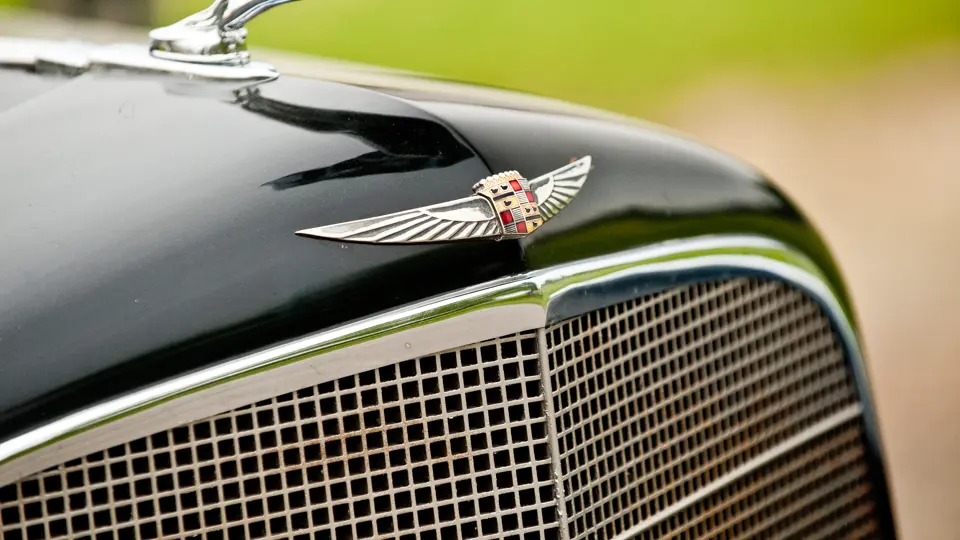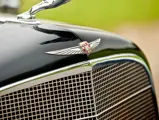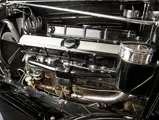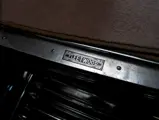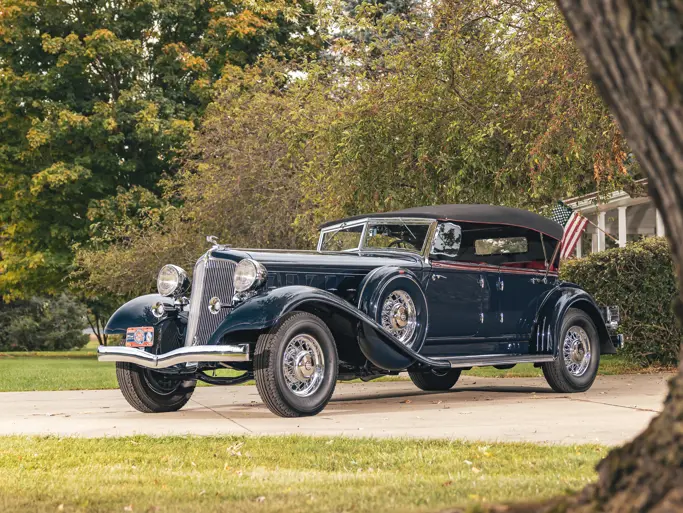Series 452-C. 165 bhp, 452 cu. in. overhead valve V-16 engine with three-speed manual transmission, solid front axle and live rear axle with semi-elliptic leaf springs, and four-wheel vacuum-assisted mechanical drum brakes. Wheelbase: 149"
- Rare original car with fewer than 30,000 miles
- Pebble Beach showing in 2003
Historians still puzzle over Cadillac’s decision to build a sixteen-cylinder car. The company was well established as a quality builder of V-8s, and aside from Marmon, which was not a serious foe, other American luxury manufacturers, particularly Cadillac’s viable competitors Packard, Lincoln and Pierce-Arrow, were content with twelves. One motivation seems to have been the desire to build the finest motor car in the world. The company’s own advertising attempted to explain it thus: “The story of the V-16’s ascendency is an interesting one. In the first place, this car had its inception in the avowed determination of the General Motors Corporation to produce the world’s finest motor car. And while the creation and development of this super car was entrusted to Cadillac, there was made available for the purpose every facility that General Motors itself possessed. No restriction of any nature was permitted to interfere with, or in any way hinder, the realization of the fundamental purpose – to produce the finest medium of personal transportation on earth.”
The brochure handed out at its 1930 introduction explained further: “The Cadillac V-type eight-cylinder engine raised performance standards as no other automotive power plant ever did, and there is, even now, no pressing need for finer, more capable, or more luxurious cars than the present Cadillacs and LaSalles. Yet, there are sold in this country, every year, fairly considerable numbers of automobiles, foreign and domestic, at prices two or three times those of Cadillac and LaSalle.” In other words, there was an upper-crust market to be tapped, and Cadillac wished to exploit it. The late historian Griffith Borgeson put it down to the same ambition that led E.L. Cord to build the Duesenberg Model J. He also espoused the view that since road building was taking place at an unprecedented pace, there was a desire for a car that would cruise effortlessly on the new highways, in effect an American gran turismo car.
Subtle changes were made for 1932: a longer wheelbase, new carburetors, a mechanical fuel pump, heavier axles and larger brakes. A vacuum-operated automatic clutch was introduced along with free-wheeling. Also new were adjustable shock absorbers operated from the dashboard. Silent helical gears were now used in all Cadillac transmissions. Technical changes for 1933 were modest: smaller wheels and other minor updates. It was the styling for which the ’33s would forever be known. Many collectors consider this design, with its triple cone horns, four blade bumpers, available stainless body and fender trim and many other details taken together, to be an Art Deco masterpiece.
This car is a rare survivor in near-original condition. Built for a Mrs. H.A. Springle, it was delivered through General Motors Products of Canada on May 25, 1933. The paint, chrome and interior are all extremely original, and the car is accompanied by a copy of the build sheet, confirming its original configuration and body style of “Fleetwood Custom Limousine.” Showing just 29,500 miles, it made a dramatic appearance at Pebble Beach in 2003.
Fleetwood built just 32 of this body style on the V-16 chassis in 1933, of which this is number 18. In fact, the whole V-16 experience was on the wane. The Cadillac Sixteen had a strong start in the market, particularly in view of its inauspicious timing. Sales in 1930 and 1931 totaled 3,251 cars. But most of these, 2,887, came in the 1930 model year. Just 364 were produced in 1931 and a further 300 in 1932. At year’s end in 1933, just 126 Sixteens had been sold. Such low production, combined with the exceptional styling attributed to 1933 only, makes the 1933 models in all their forms perhaps the most sought after of all the V-16s.






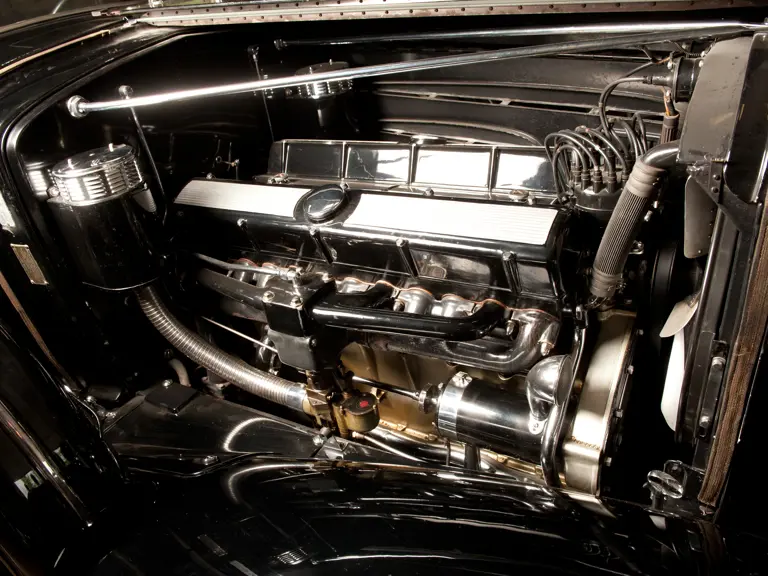
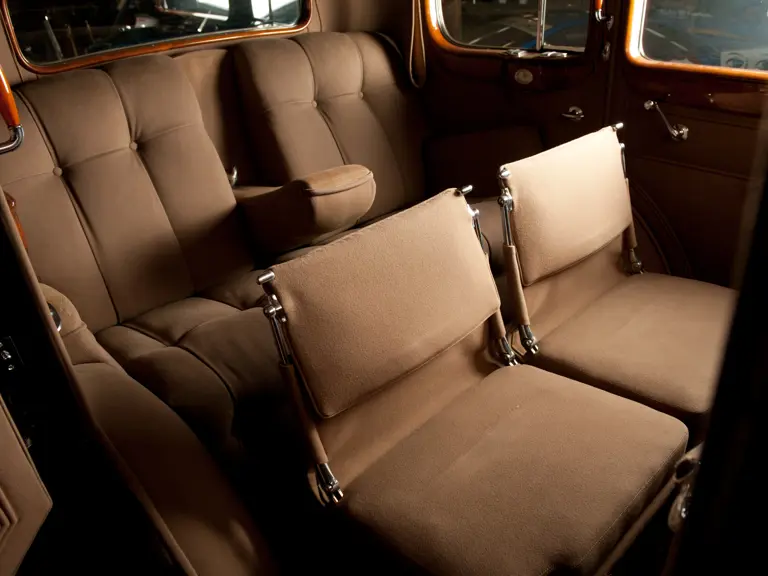

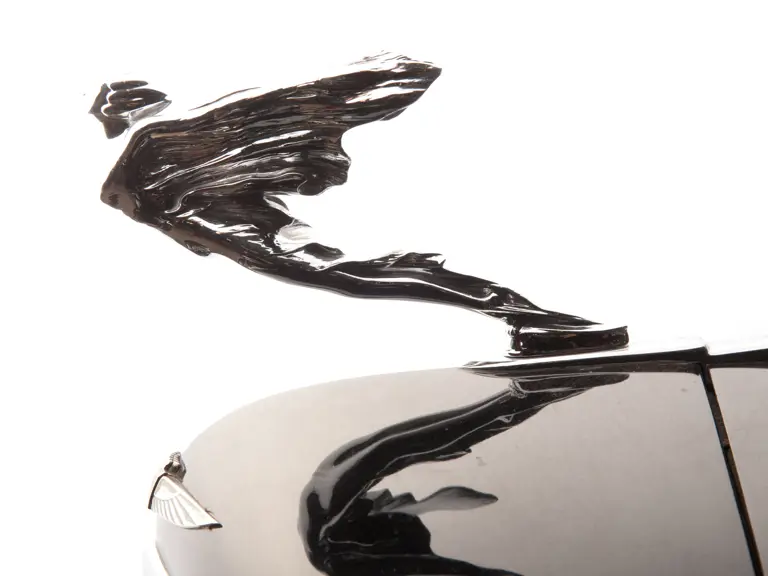









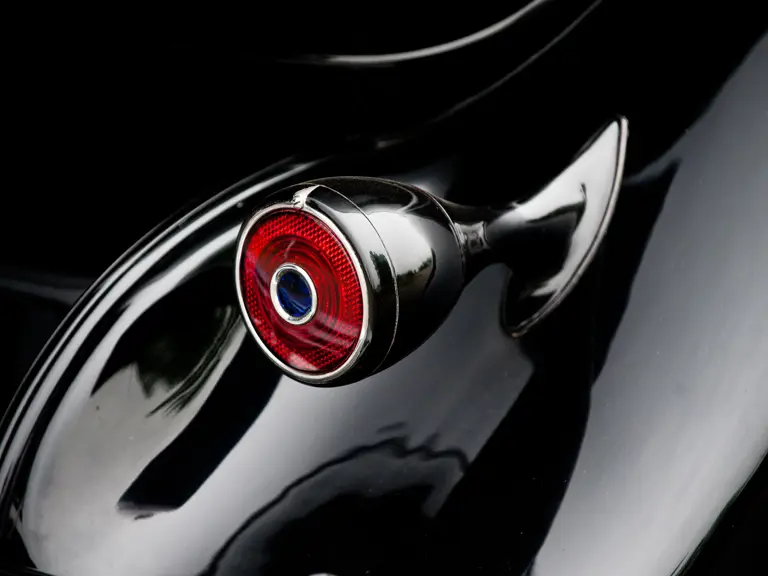
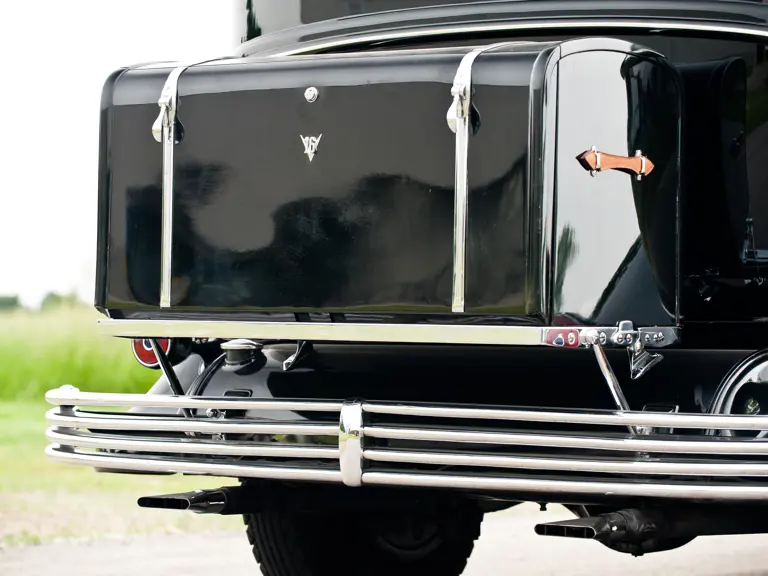



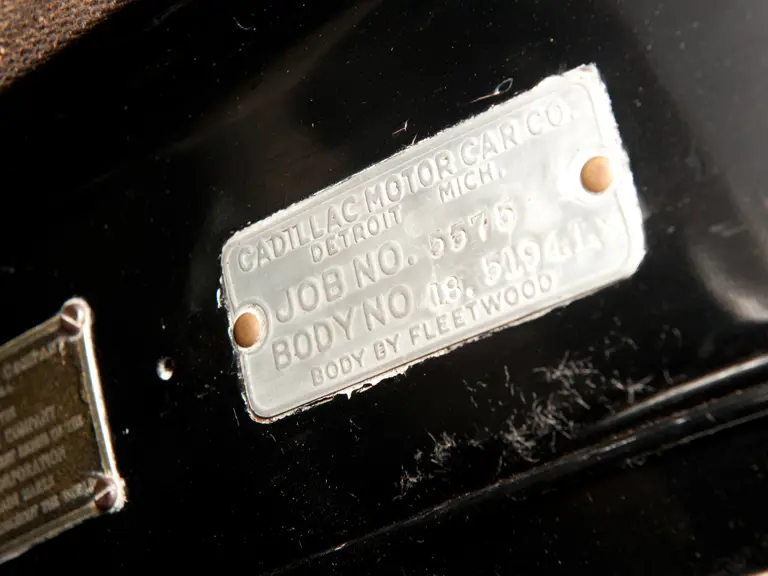

 | Plymouth, Michigan
| Plymouth, Michigan


